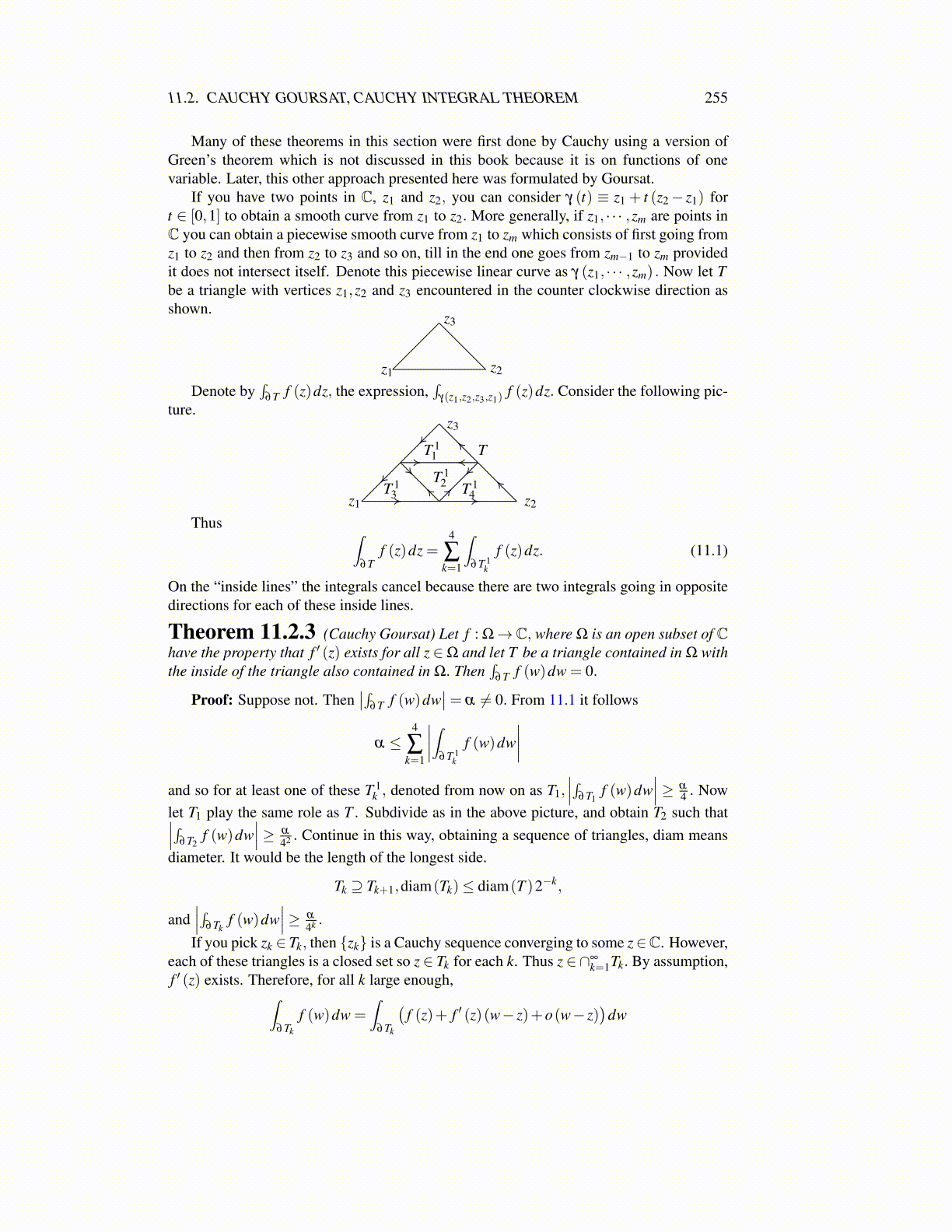
11.2. CAUCHY GOURSAT, CAUCHY INTEGRAL THEOREM 255
The following picture is to illustrate the arguments which follow. z is the point in thecenter of the triangle.
B
C
A
γR
−γr
z0
The following corollary follows right away from Theorem 11.2.6. You just repeat theproof, but this time, you use the given star center rather than having the freedom to pickany point in the set.
Corollary 11.2.8 Let Ω be a star shaped open set and suppose f ′ (z) exists on Ω. Thenf has a primitive on Ω.
The above is a picture of piecewise smooth curves smashed together as shown in thepicture. Also suppose f ′ (z) exists for all z ∈ Ω, an open convex set containing the largecircle along with its inside, possibly Ω = C. γR corresponds to the large circle and −γr isthe parametrization for the small circle centered at z. The large circle is oriented counterclockwise and the small one is oriented clockwise. Thus γr would be oriented counterclockwise.
There are three contours sharing sides which are straight lines. Orient each of thesethree contours in the counter clockwise orientation as suggested by the arrows. Thus theintegrals over the horizontal and vertical lines will cancel because they have opposite ori-entations. Now there are three regions labelled with A,B,C these are convex and boundedby the line segments consisting of the vertical and horizontal lines which are extended in-definitely, along with those line segments which, taken together, form the small trianglethat encloses the point z. Thus these are convex sets of points. Letting 0 < δ so that thedistance from each of these convex sets to z is more than δ , Consider the open regions
A+B(0,δ ) ,B+B(0,δ ) ,C+B(0,δ )
where the notation E +F means {x+ y : x ∈ E,y ∈ F}. I have illustrated A+B(0,δ ) in theabove picture. The three contours are contained in the open convex sets
(A+B(0,δ ))∩Ω,(B+B(0,δ ))∩Ω,(C+B(0,δ ))∩Ω
Thus f ′ (z) exists in each of these convex open sets. Hence, w→ f (w)w−z ≡ g(w) has a primi-
tive in each of these convex open sets. Just use the quotient rule which holds for the samereason as it does for functions of a real variable. The only place there is a problem is where